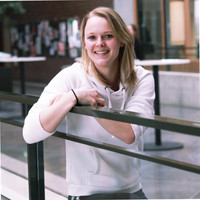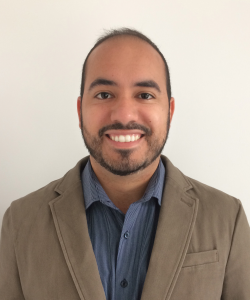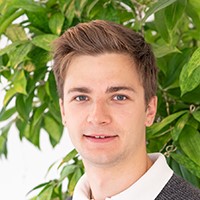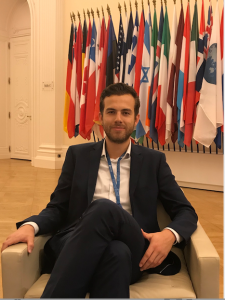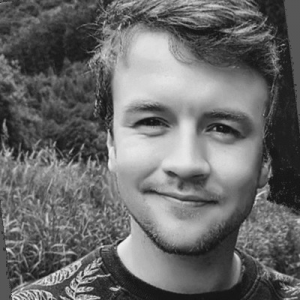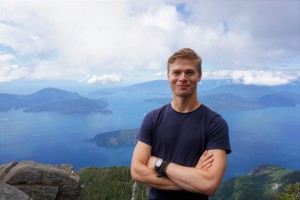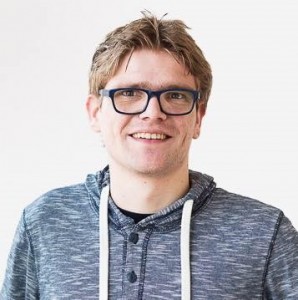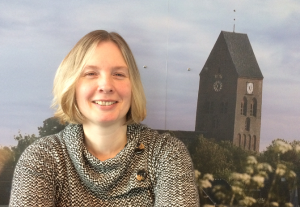Derek van Bochove
MSc topic: Combining MLS & ALS Point Cloud Data
LiDaR point clouds can serve a wide range of applications. 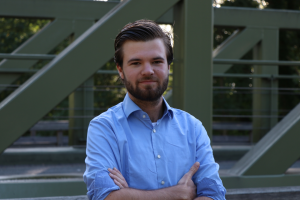 Generally speaking, point clouds can be obtained in two ways: Mobile Laser Scanning (MLS) or Airborne Laser Scanning (ALS). The combination of ALS and MLS data offers interesting opportunities for new applications and the improvement of existing applications. This research focuses on finding out which point cloud combination methods suit the applications of the municipality of Rotterdam the best. Two groups of point cloud users are identified: advanced users and basic users. Advanced users would like to have full control over their point cloud data. On the other hand, basic users would benefit more if the data was made available to them in a more simplified form. This research proves that a combination of Airborne Laser Scanning and Mobile Laser Scanning data is of great added value.
Generally speaking, point clouds can be obtained in two ways: Mobile Laser Scanning (MLS) or Airborne Laser Scanning (ALS). The combination of ALS and MLS data offers interesting opportunities for new applications and the improvement of existing applications. This research focuses on finding out which point cloud combination methods suit the applications of the municipality of Rotterdam the best. Two groups of point cloud users are identified: advanced users and basic users. Advanced users would like to have full control over their point cloud data. On the other hand, basic users would benefit more if the data was made available to them in a more simplified form. This research proves that a combination of Airborne Laser Scanning and Mobile Laser Scanning data is of great added value.
Bart Slagter
 MSc topic: Characterisation of wetland types using Sentinel-1 radar time series data.
MSc topic: Characterisation of wetland types using Sentinel-1 radar time series data.
The aim of this thesis was to characterise wetlands – one of Earth’s most valuable ecosystems currently being lost at alarming rates – by using freely available, temporally dense and high-resolution Sentinel-1 radar satellite data. The use of the data was assessed by applying Random Forests for multiple classification levels including general wetland delineation, wetland vegetation types and surface water dynamics. The results in the St. Lucia wetlands in South Africa showed accurate results, although the addition of optical Sentinel-2 data led to significant accuracy improvements. Accuracies were relatively poor for classifications in high-vegetated wetlands.
Laura van Wetering
MSc topic: A digital model of indoor places and their functions at airports.
Airports have changed rapidly over the years and their importance and development is widely recognized. The change in interactions and activities that are possible at airports influences what airports offer. This study investigated new opportunities and challenges surrounding the development of functional affordance maps of airports, and tried to develop an application that allows visitors to plan their stay at Schiphol Airport in a detailed manner. The outcomes of this study showed that current web information does not provide sufficient information on airports and their affordances. Additionally, the mock-up of a wayfinding application for Schiphol Airport was developed.
Kai Meijning
MSc topic: Assessing the impact of bicycle infrastructure on cyclists’ route choice in the Dutch province of Noord-Brabant
In this research, GPS data collected by the B-riders program in the Dutch province of Noord-Brabant was used to find out if the route choice behaviour by cyclists could be explained by infrastructural factors. This route choice behaviour was studied by comparing the difference between the observed routes and the shortest route in distance with the difference in infrastructural factors along these routes. Results showed that the one infrastructural factor that significantly influences a cyclists route is traffic signal control at an intersection. This is in contrast to previous studies, where cyclists also preferred other factors like road quality.
Eoin Scollard
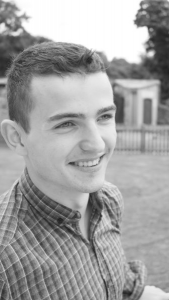
MSc topic: An Evaluation Model for GI SMEs migrating to GeoCloud Services
Problem: There is no robust method for evaluating the pros and cons of geo-cloud migrations particularly among GI SMEs.
Results: A combined Apdex and Analytical Hierarchy Process was designed and demonstrated in three GI SMEs.
Other Interests: Geodatabases, data extraction and processing.
José Antonio Cirillo de Assis
MSc topic: Historical Aerial Imagery for DEM Extraction to Quantify Volumetric Changes between the Years of 1945 and 2017, in the East-Vlieland Coast, the Netherlands
In this research we used the DEM extraction procedure to calculate the volumetric changes of the dunes and the landscape of the East-Vlieland coast in the Netherlands for the period 1945 and 2017. These 3D historical data were compared with current situation of coastal LiDAR and AHN datasets, contextualizing the 2D and 3D landscape changes. The extraction procedure of DEMs from historical aerial photographs successfully reconstructed the 3D surface of the study area for the years of 1945 and 1981. A comparison between the Normalized Cross Correlation and Semi-Global Matching algorithms for point cloud generation was also given.
Grigory Nedaev
MSc topic: Optimizing Municipal Solid Waste Collection with Sensor Data
This study is about optimizing the waste collection. Sensors can improve the scheduling and routing. The benefits are a reduction in air pollution and traffic and a decrease in operational costs. Dynamic scheduling inevitably requires dynamic routing. We discuss the benefits and the drawbacks that these floating schedule and routing may bring about. We approach the problem from an algorithmic perspective and use mathematical methods to solve the problem. Finally, we develop and present a minimalistic software kit for scheduling and routing.
Sybren Frederico de Jesus Madureira Porfírio
MSc topic: Driving your Way – The Building of a Speed-influenced Navigation System
Navigational systems have kept a focus on calculating optimal paths, i.e. the fastest, shortest, etc. Little attention is given to offering users multiple options, where the final decision would depend on their priorities.
The question to answer was: “To what extent does driving at different maximum speeds influence the time and fuel consumption for fastest car routes?”
Though the most important factor in determining time and fuel is the location of the point of departure and the destination, maximum speeds’ influence is large enough to be relevant for drivers. As such, the proposed model is deemed useful for this purpose.
Muhammed Al-Komaim
MSc topic: Site Suitability Analysis for Different Indigenous Rainwater Harvesting Systems – A Case Study of Sana’a Water Basin, Republic of Yemen
Nowadays, the management of water resources in Sana’a Water Basin is a complex issue due to rapid population growth, aridity and complex physiographic environment. Groundwater is the main water resource in the basin for domestic, agricultural and industrial uses, in which the agricultural sector consumes about 90% of this resource. As a result, the groundwater level is declining rapidly. Rainwater harvesting systems (RWH) are a prominent solution to deal with water scarcity by conserving available water resources and the energy needed to deliver water to the water supply systems. This study aims to select the optimum sites for different indigenous RWH systems in Sana’a water basin through the use of modern techniques such as GIS, Remote Sensing and Multi-criteria Analysis (MCA). The results of the suitability maps indicated that a sufficient area of high and very high suitability is existed in the study area for the four RWH systems, particularly terraces, check dams, ponds, and spate irrigation.
Tom van der Meer
MSc topic: Geovisualization for the Dutch fire brigade:
a research about effective cartographic methods for assisting tactics choice and indoor deployments during building fires.
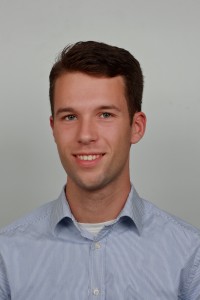 An information driven approach is safer and more effective when fighting building fires. Indoor deployments in complex buildings pose extra risks to the firefighters, making it important to explore these environments when incidents happen. Digital operational information systems can help during this exploration. Two user groups were identified: (head) officers and navigators. The first is mainly interested in tactical building information and the latter has a need for operational information. A new interface was designed called ToggleMaps. This interface combines a 2D view of separate building levels with a 3D model of the building as a whole.
An information driven approach is safer and more effective when fighting building fires. Indoor deployments in complex buildings pose extra risks to the firefighters, making it important to explore these environments when incidents happen. Digital operational information systems can help during this exploration. Two user groups were identified: (head) officers and navigators. The first is mainly interested in tactical building information and the latter has a need for operational information. A new interface was designed called ToggleMaps. This interface combines a 2D view of separate building levels with a 3D model of the building as a whole.
Daan Koopmans
MSc topic: Mapping the perception of vulnerability: A case study of flood-prone areas in Noord-Holland, the Netherlands
Current quantitative vulnerability assessments do not provide information on the perception that people have regarding the flood vulnerability of their surrounding areas. Consequently, the awareness raising efforts cannot fully be targeted to the fields in which the awareness of the potentially affected people is lacking. Moreover, predicting people’s behaviour during a flood is more difficult using quantitative data only. To bridge this gap, a perceptual flood vulnerability assessment is presented in my thesis, which provides necessary information regarding these issues. The demonstrated vulnerability assessment enables researchers and policymakers to successfully capture and interpret one’s spatial representation regarding the flood vulnerability of their surrounding areas.
Sander Goossens
MSc topic: Utilizing Sentinel-1 for structural damage assessments at ‘single-buildings’ level.
The usability of open-source radar data following man-made or natural disasters is poorly investigated. Damage assessments studies involving Synthetic Aperture Radar (SAR) are still limited to a ‘street-block’ level. SAR, however, can be an important source of Remote Sensing data at the moment that clouds obstruct the surface information that could be retrieved from optical satellite imagery.
Results of my case study in Sint Maarten (island) have shown that the spatial resolution of Sentinel-1 limits the detection of structural damage at single-buildings level. Nevertheless, significant change in backscatter, and phase coherence, was detected amongst relatively large buildings (i.e., airport terminal).
Rik Nuijten
MSc topic: UAVs for measuring plant traits and crop treatment’s influence, incorporating object-based image analysis methods.
Drones’ flexibility, affordability, and high spectral resolution together with appropriate image analysis methods are a strong and promising combination for applications in precision agriculture. This study made use of object-based image analysis methods for detecting and segmenting individual crops and to give accurate estimations of plant dimensions. Differences between crop treatments were identified using the individual detected crops in combination with three-dimensional and hyperspectral data. High crop detection rates, precise measurements of crop-area, and clear differences in performance measures between crop treatments were found.
Jelle Stuurman
MSc topic: Automating air temperature Siting Classification of meteorological stations according to the World Meteorological Organization guidelines
At the Royal Netherlands Meteorological Institute (KNMI), I investigated the ability to automate the air temperature Sting Classification (SC) according to the World Meteorological guidelines (WMO). Using geospatial datasets including the Actueel Hoogtebestand Nederland (AHN) and the Basisregistratie Topografie (BGT) an automated model was developed in R to determine the SC of the 34 Automatic Weather Stations (AWS) on land owned and maintained by the KNMI. Results shows that 55.9% of the automated classifications corresponded with the manual SC procedure. The automated model can be used to determine the SC of any location on land in the Netherlands and thus find potential new locations for AWS to improve the representativeness of meteorological observations.
Lineke de Jong
MSc topic: Crop type prediction based on farmers declarations
Every year farmers declare specific agricultural business information concerning CAP (Common Agricultural Policy), which is a considerable administrative burden. To lessen this burden, RVO.nl researches manners in which the declaration can be simplified. One effort is the research of predicting crop types based on historical declaration data using datamining software. Previous research showed difficulties with detecting crop rotation schemas due to the changing crop type codification. This research investigated how to correct for the change in crop type codification, how to identify crop rotation schemas and which datamining approach was best suited to predict crop types.
Heleen Elenbaas
MSc topic: Amsterdam and the spatial justice debate: studying the spatial equality of urban greenery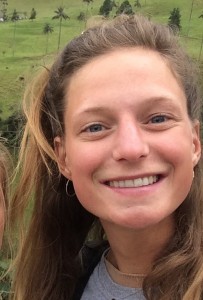
Urban greenery is essential in providing ecosystem services that make urban life possible. However, green spaces are often not equally distributed across urban areas, since neighbourhoods with a higher socioeconomic status (SES) tend to provide their population with more access to green spaces than areas with lower SES. In this thesis, a GIS analysis was performed to analyse to which extend this is the case in Amsterdam.
Falco Joosten
MSc topic: Map supported point cloud registration
Point clouds suffer from positioning errors and lacking structuration. I have developed a method to align point clouds with maps. The registration was used to transfer knowledge from the map features to their corresponding objects in the point cloud. Finally, a smart point cloud of buildings was created. In this newly created 3D model, the user can request information from identified buildings, such as the year of construction.
Cynthia de Vos
MSc topic: Investigating the influence of safety on cyclists’ route choice: a revealed preference study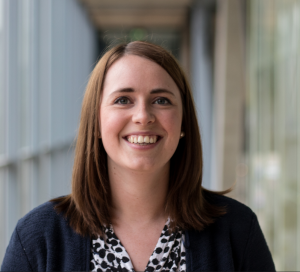
Compared to motorized vehicles, the behaviour of cyclists is still, to this day, relatively unknown. In this thesis, GPS data from the largest cycling project in the Netherlands (the Fietstelweek) is used to investigate on a large scale whether safety factors of the environment explain route choice behaviour. The research shows that cyclists do in fact choose significantly longer routes than the shortest possible alternative. However, the amount of deviation is limited. Several factors do influence cyclists’ route choice behaviour in the way we would expect based on preferences found in literature, but also some are unexpected. However, the strength of the linear models do not explain the relationship very well and therefore other methods should be explored to investigate route choice behaviour even further.
Valentijn Lemkes
MSc topic: District Heating in Amsterdam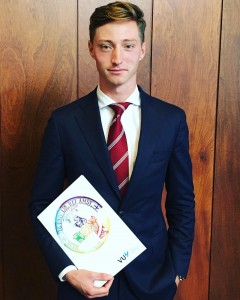
Making Amsterdam CO2 neutral by studying district heating solutions using GIS. The municipality of Amsterdam wants to be CO2 neutral in the near future, to reach this goal new ways of distributing heat are studied. This study used GIS to calculate the best route for a new district heating network, by making use of open source data. Not only the best route was calculated but also the social cost and benefits of this system. The results were negative, however the system should still be considered by policy makers, because the cost due to climate change are higher than installing a district heating network.



